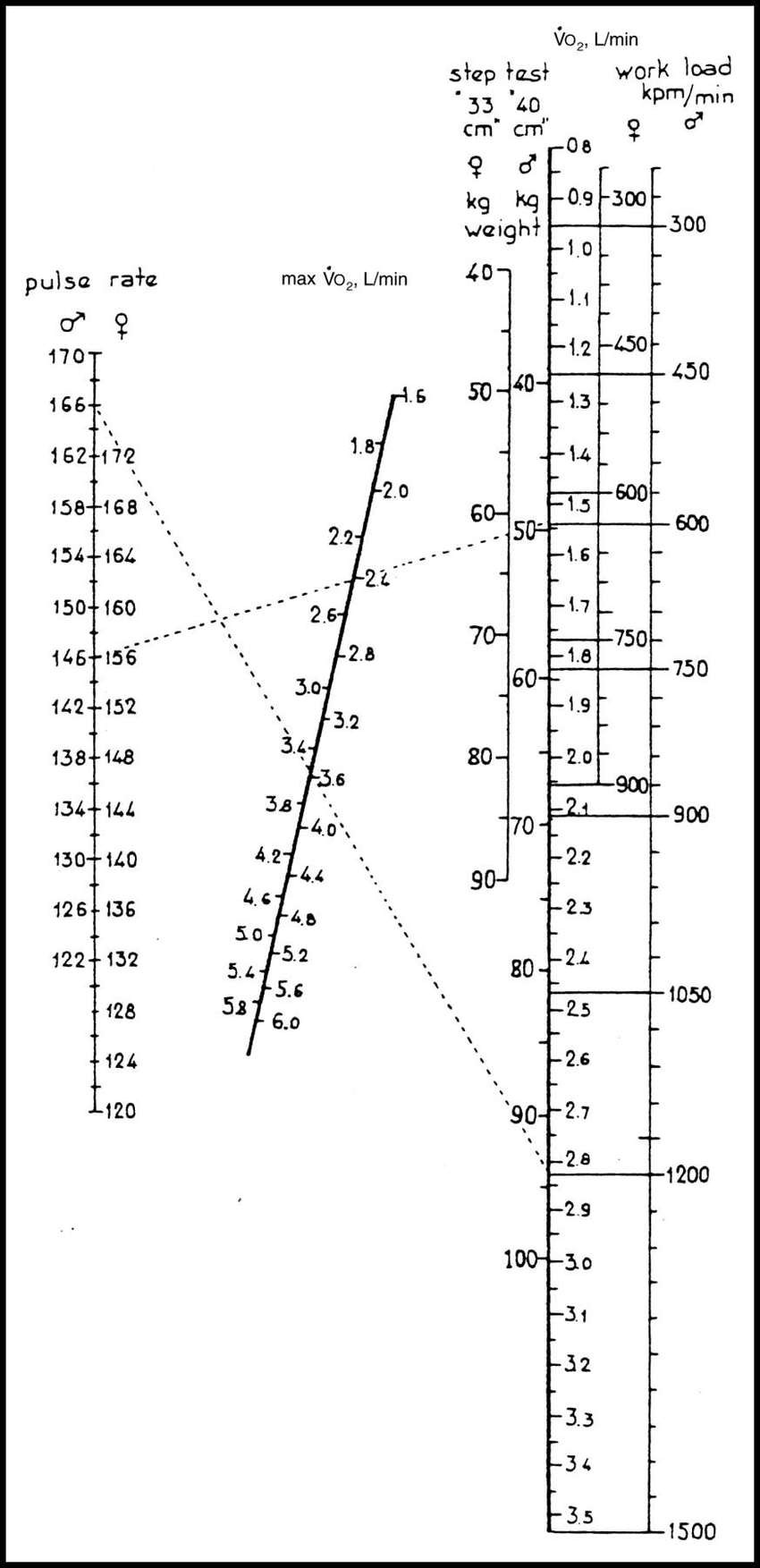The Åstrand-Ryhming Test
The Åstrand VO2max test (1) is a submaximal test used to estimate an individual’s maximum oxygen uptake (VO2max). This test was designed by Swedish physiologist Per-Olof Åstrand in the 1950s. It is a simple but effective way to assess cardiovascular fitness.
During the Åstrand test, the person cycles on an ergometer (a stationary bicycle) at a constant speed. The resistance on the bicycle is adjusted so that the person’s heart rate remains within a certain target zone, usually between 125 and 170 beats per minute, depending on age and fitness. The resistance must be held constant for 6 minutes, then the average heart rate of the last minute and the resistance in power must be used in this (rather complicated) graph, also called a nomogram. The idea is to draw a line from the left to the right side of the graph and where it crosses the line “maximal oxygen intake”, you will find the estimate for the VO2max. By the way, the test can also be performed with a step test.
Fortunately, someone in the 1980s came up with the idea of shooting this test into a formula. We use this formula (2) and thus power-based in the calculator below.

Instructions
Cycle briefly and gently warm up, then continue cycling at a constant power for 6 minutes at a heart rate between 125 and 170. Enter that power output and the last minute’s heart rate below to get an estimate of your VO2max.
The adapted Astrand-Ryhming test by Buono et.al. (1989)
References
A Nomogram for Calculation of Aerobic Capacity (Physical Fitness) From Pulse Rate During Submaximal Work, P. -O. Åstrand and Irma Ryhming. Journal of Applied Physiology 1954 7:2, 218-221.
Buono, M. J., Roby, J. J., Micale, F. G., & Sallis, J. F. (1989). Predicting maximal oxygen uptake in children: modification of the Astrand-Rhyming test. Pediatr Exerc Sci, 1:278-283.